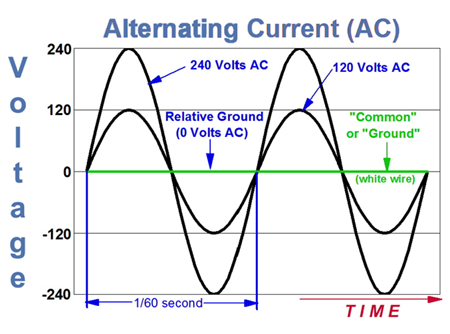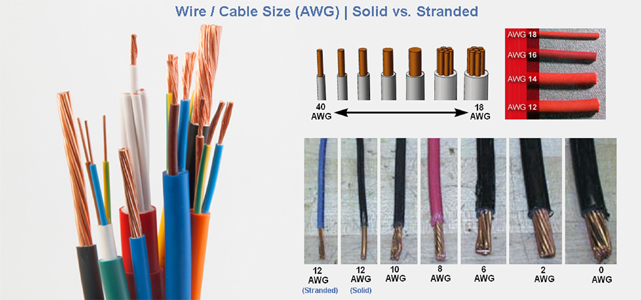Thanks to the
Sensor, Switch, Smart Camera, and Machine Vision device OEM's who've helped us compile our listing here.
Num |
A |
B |
C |
D |
E |
F |
G |
H |
I |
J |
K |
L |
M |
N |
O |
P |
Q |
R |
S |
T |
U |
V |
W |
X |
Y |
ZAC - Acronym that stands for "Alternating Current", see definition listed below.
Accessories - See Sensor Accessories
Active face - Same as "sensing face", which is; a surface of the proximity sensor parallel to the target, from which operating distance/range is measured, along the reference axis.
Actuator - A switch mechanism that when moved as intended, operates the switch contacts. This mechanism transmits the applied force from the actuating device to the contact block, causing the contacts to operate.
Actuator free position - The initial position of the actuator when there is no external force (except gravity) applied to the actuator.
Actuator operating position - The position of the actuator when the contacts operate.
Actuator reset position - The position of the actuator at which the contacts move from the operated position to the “normal” position.
Alignment - For photoelectric sensors; positioning of light source and receiver, reflector, or object so the maximum amount of the emitted light energy reaches the receiver’s photodetector. Similarly for ultrasonic and laser sensors, when discussing aiming the emitted field in an attempt to correctly detect the intended target(s).
Alternating current (AC) - A sinusoidal current rated at a given frequency, usually 50Hz or 60Hz, see illustration below:

Aluminum, 6061 alloy - Type of aluminum alloy often used to make sensor brackets and sensor mounting components. Characteristics include excellent joining characteristics, good acceptance of applied coatings, combines relatively high strength, good workability, and high resistance to corrosion; widely available, economical. A common metal finishing treatment called Anodizing is performed to improve surface finish and long-term component function.
Ambient - The environmental conditions in a sensing area (temperature, light level, humidity, air contamination).
Ambient light - Illumination of a receiver that its light source does not generate, or light from an external source in addition to light radiated by the source of the photoelectric device onto the device’s detector.
American wire gauge (AWG)
- Wire size standard designating a diameter of an electrical conductor, where the gauge number is inversely related to size; i.e. a larger number means a smaller cross-section. Common proximity sensor wires and networking cables use 16 to 26 AWG wires, with 2 to 19 conductors.

Ampère (A) - A unit of measurement of electric current. One (1) Volt across one (1) Ohm of resistance causes a current flow of one (1) Ampère. One Ampère is equal to 6.28 x 1018 electrons passing a point in one second.
Analog output - A sensor output that varies over a range of voltage (or current) and is proportional to some sensing parameter (as opposed to a digital output). The output on an analog photoelectric sensor is proportional to the strength of the received light signal. The output of an analog ultrasonic proximity sensor is proportional to the distance from the sensor to the object that is returning the sound echo.
"AND" logic - A logic function in which two or more inputs wired in series must be closed to energize the output.
Angular reflection scanner - A photoelectric proximity switch in which the optical axes of the light sender and light receiver form an angle (DIN 44030).
Anode - The positive (+) electrode of a device; also see Diode
Anodizing - An electrochemical process that converts the metal surface into a decorative (various colors), durable, corrosion-resistant, anodic oxide finish. Basic model of our Cushioned Sensor Mounting Brackets are fabricated with 6061 aluminum alloy and finished with a durable black anodized finish.
Anti-vibration Nuts - Internally threaded fasteners that threads onto barrel-style proximity sensors and other industrial controls. Features such as multiple barbs, ribs and serrations on the nut's face deform and act to increase the binding forces between the nut and adjacent bracket mounting surfaces. Increased friction of these connections prevent sensor and switch from loosening in high vibration applications. Also see Washers, Washer, anti-vibration
ANSI - The American National Standards Institute, or ANSI, a body which promotes standards for various industries in North America.
Aperture - The size of a lens opening or a mechanical part/external cap attached to a lens that restricts the size of a lens opening, therefore, limiting the size of the effective beam.
Area Classification - System and methods for analyzing and classifying environments (factories, plants, and other production facilities etc.) for dangerous situations (i.e. explosive gas atmospheres), so to facilitate a proper selection and installation of equipment for safety reasons.
AS/RSs - See Automated Storage & Retrieval Systems (AS/RSs)
Attenuation - The reduction of signal strength or loss or reduction of beam intensity resulting from environmental factors, such as dust, dirt, humidity, steam, or other contaminants in the sensing area.
Autocollimation - Reflecting principle in which a light beam striking a reflector is reflected parallel to itself.
AutoID - See "Automatic Identification (AutoID)" below.
Automated Control - See "Automation" listed below.
Automated Storage & Retrieval Systems (AS/RSs) - Often used to define large systems of conveyors and automated package routing systems that perform; inventory management in manufacturing facilities, distribution centers, and warehouses. A large number of AS/RS sensors, scanners and AutoID devices are used.
Automatic Identification (AutoID) - Automatic identification, also referenced as AutoID, is a term in the field of Industrial controls where sensors are used to capture data from codes and tags on parcels, products and goods moving through a process. The data is interpreted by computers and or sent to other system nodes so that another piece of equipment, machinery or person(s) Downstream can act on, and or, record it.
Automation - Automation is the use of various control systems (computers, software, sensors, switches, motors and other actuators) for operating equipment such as machinery, processes in factories, boilers and heat treatment ovens, and a wide variety of other applications with minimal or reduced human intervention.
Axial approach - The "direction" at which a target approaches a sensor's detection face, a target with its center maintained on the reference axis. See Radial approach and Reference axis.
Num | A | B | C | D | E | F | G | H | I | J | K | L | M | N | O | P | Q | R | S | T | U | V | W | X | Y | Z


